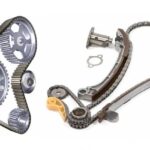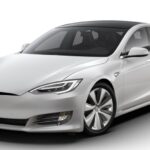The class develops what is turbo electric, its advantages and disadvantages, and the implications for fleet management.
Slide 2. Electric turbo.
The automotive industry continues to innovate to improve engine performance, and one of the emerging technologies in this field is the electric turbo. This system, which outperforms conventional turbochargers in efficiency, promises a significant improvement in engine performance without sacrificing power.
In the following, we will explore in detail the electric turbo concept, its advantages and disadvantages.
- Electric turbo: Concept.
The electric turbocharger is characterized by its supercharging system, similar to traditional turbochargers but with higher efficiency. It operates by means of an electric motor that controls the rotational speed of the turbine, optimizing the air flow to the engine for a better air-fuel mixture, resulting in higher engine efficiency.
- How does it work?.
The so-called E-Turbo or electric turbocharger incorporates an electric motor in its structure, which drives the air turbine at high speed. This process increases the kinetic energy of the air entering the cylinder, improving combustion and, therefore, the efficiency and performance of the vehicle.
- Advantages and disadvantages.
The electric turbo represents a remarkable advance in combustion engine technology, offering several significant benefits, although not without its challenges.
- Advantages.
1. Elimination of turbo lag: Provides immediate response when accelerating, enhancing the driving experience.
2. Efficient performance: Improves performance from low revs, optimizing fuel usage and increasing torque.
3. Advanced diagnostics: Includes software for system monitoring and diagnostics, facilitating maintenance and fault detection.
4. Hybrid systems: The electric turbo is specially designed for hybrid systems, as it allows recovering kinetic energy and generating electricity to recharge the battery.
5. Efficiency: According to Garrett, one of the pioneers in electric turbochargers, the system saves up to 15% fuel. This is possible, among other things, thanks to a new control program with specific algorithms and monitoring systems.
6. They outperform traditional turbochargers. The electrification of the turbocharger system also serves to overcome other limitations of traditional turbo systems, such as enabling high torque at low rpm, being able to use larger turbo devices and compensating for low air flow.
- Disadvantages.
1. High cost: Its price exceeds that of conventional turbochargers, being more common in high-end vehicles.
2. Increased weight: Adds additional weight to the vehicle due to the integrated electric motor.
3. Maintenance complexity: The novelty of the technology can make repair and maintenance difficult in non-specialized workshops.
4. Space requirements: The system needs more space in the engine due to the additional components.
5. Reliability. Since these devices are relatively new, they still need to be extensively tested and rely on a calibration plan to ensure that they will perform efficiently and according to industry safety standards.
- The future of turbo electric: Challenges and prospects.
Despite current challenges, the electric turbo is expected to play a crucial role in the evolution of the automotive industry. By 2025, it is estimated that a significant proportion of vehicles will incorporate this technology, driving cost reductions and expanding the technical know-how required for maintenance.
In conclusion, turbo electric is emerging as a promising innovation in vehicles, with the potential to significantly improve engine efficiency and performance.
Although it currently faces challenges such as cost and technical complexity, its growing adoption and future technological advances could minimize these drawbacks, consolidating its position in the market.
- Fleet management implications.
The main consequence is to have the necessary knowledge to perform the maintenance and repair the breakdowns of the electric turbo, so it is necessary to provide training to our workers in this new technology.
As the electric turbo is so new, there may be some problems in finding a specialized workshop that knows how to repair it.
As the electric turbo is a technology that is not very well established in the market at the moment, it is not well known what kind of breakdowns it can have, but as there is an electrical system involved, the most probable problems will be of an electrical nature or of the control unit that manages the electric motor.
- Slide 3. Thank you for your time.
The class has developed what the electric turbo is, its advantages and disadvantages, and the implications for fleet management see you soon.
Download the audio




















